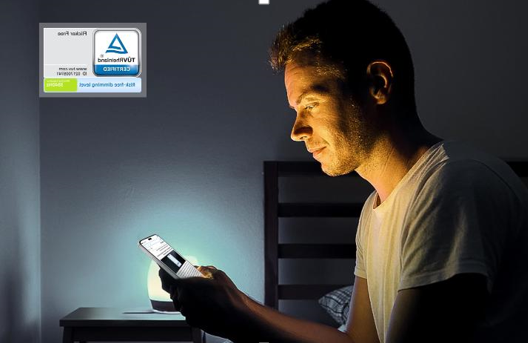Is Dark Mode Really Better for Your Eyes?

Dark mode has become increasingly popular among device users. Its sleek appearance and energy-saving claims have captured attention, but the question remains: does dark mode benefit your eyes? With digital devices playing a significant role in daily life, including advanced smartphones like the HONOR 400, understanding the impact of screen settings on eye health is essential. This blog delves into the intricacies of dark mode, examining its advantages and limitations for your eyes. By exploring these factors, you can make an informed decision about whether dark mode is the right choice for you.
Understanding Dark Mode and Its Purpose
What Is Dark Mode?
Dark mode is a display setting where the interface is primarily dark with light-colored text and icons. This is contrary to the traditional light mode, where dark text and images appear on a lighter background. Users can activate dark mode on various applications, websites, and operating systems.
Why Tech Companies Introduced It
Tech companies recognized the growing need for eye-friendly interfaces. Dark mode surfaces as a response to concerns over screen glare and blue light exposure. By offering a setting with reduced brightness levels, these companies aimed to provide a visually comfortable experience, especially in dimly lit environments.
Light Mode vs. Dark Mode at a Glance
Light mode uses black text on a white background, which resembles the appearance of printed books. Dark mode, however, flips this concept by using white text on a black background. Each mode comes with its benefits and drawbacks, and the choice ultimately depends on user preferences and specific conditions.
See also: Zchwantech’s Role in Shaping the Future of Malaysia’s Digital Economy
Benefits of Dark Mode for Eye Health
Reduced Eye Strain in Low-Light Settings
Dark mode helps reduce eye strain in low-light settings by lowering screen brightness and contrast. Combined with the HONOR AI Eye Comfort Display and its 3840Hz Risk-free Dimming and Ultra Dark Mode, this setup minimizes glare and visual fatigue. With precise brightness control down to 1.5 nits, users experience enhanced eye comfort during extended screen use, especially in dim environments.
Extended Battery Life for OLED Screens
Devices featuring OLED screens gain battery life advantages from using dark mode. Unlike LCDs, OLED displays light up individual pixels—black pixels stay off, saving energy. This reduced power usage makes dark mode an efficient option for mobile users aiming to extend battery performance. Choosing dark mode is both practical and beneficial for daily smartphone use.
Improved Sleep When Used at Night
Bright screens before bed can suppress melatonin and disrupt sleep. The HONOR AI Eye Comfort Display tackles this with Circadian Night Display and a 20% increase in melatonin, helping users transition more easily to sleep. Alongside dark mode’s lower-intensity light, these features work together to promote healthier sleep patterns and reduce eye fatigue by 18% for nighttime use.

Potential Drawbacks and Limitations
Poor Readability in Bright Environments
In bright environments, dark mode can reduce readability due to lower contrast between text and background. This visual strain makes light mode a smarter choice in outdoor or sunlit settings—like a beach or park—where clarity matters. Leveraging features like HONOR’s Sunlight Display Enhancement ensures every detail stays sharp and readable, minimizing eye fatigue and enhancing comfort.
Impact on Users With Astigmatism
Individuals with astigmatism may find dark mode uncomfortable due to the blurred appearance of white text on dark backgrounds. This visual distortion can make reading more difficult, potentially increasing eye strain. For some, light mode offers better clarity and ease of reading, making it a more suitable option for extended screen use.
Myths About “Eye Health” Benefits
Dark mode provides certain conveniences but isn’t universally ideal for eye health. Its benefits are sometimes overstated. True eye care still depends on limiting screen time, adjusting brightness, and taking regular breaks. While it may reduce glare in low light, relying solely on dark mode ignores broader habits essential for maintaining long-term visual comfort and health.
Expert Recommendations and Best Practices
When to Use Dark Mode Effectively
Experts recommend using dark mode in dim environments to reduce glare and eye strain. It’s especially beneficial for extended reading, as many find it more comfortable. Incorporating dark mode into your nighttime habits may also support better sleep by minimizing blue light exposure, which can interfere with your body’s natural sleep-wake cycle.
How to Reduce Eye Fatigue with Other Tips
Besides using dark mode, adjust display settings—brightness and contrast—to suit ambient light. Enable blue light filters, such as HONOR’s eye comfort mode, to ease eye strain. Follow the 20-20-20 rule: every 20 minutes, look 20 feet away for 20 seconds. These habits support better eye health and visual comfort during extended screen time.
Conclusion
Dark mode offers practical benefits for eye comfort, particularly in low-light situations. However, it’s essential to weigh these against potential drawbacks like reduced readability in bright conditions. Understanding when and how to use dark mode effectively can enhance your digital experience. Combining dark mode with other eye-friendly practices can ensure comprehensive eye care. By considering your unique needs and environment, you can determine if dark mode is the best option for you.




